Search Results
Fine Jewelry University Articles matching: “aquamarine ring emerald cut”
Showing only FJU Article results. Click here to show all results.
Fine Jewelry University (Show All FJU Articles)
-
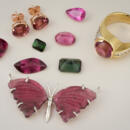
Gem in the Spotlight: Tourmaline
… speaking, tourmaline is its own mineral and not a species or member of a different family (unlike emerald and aquamarine, for example, which are members of the beryl family). It has a refractive index of 1.624 to 1.644 and a Mohs hardness of 7…was first discovered in 1554 in Brazil when Francisco Spinoza’s expedition confused its vibrant green with that of emerald. Thus began a long trend of confusing tourmaline with other gems. Another notable example of this is the “Caesars Ruby…
-
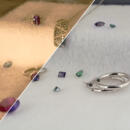
Gem in the Spotlight: Alexandrite
Emerald by day, ruby by night, more expensive than diamond and more illustrious than sapphire, emerald, or even ruby, …the Ural Mountains in Russia in the 1830s. When it was first discovered by a Finnish mineralogist, he mistook it for emerald because of how exceptional the green was in daylight. Named after the Russian prince Alexander II, the first stones … component, the stone will appear redder. Alexandrite has a refractive index of 1.746-1.755 with an average birefringence of .010. It has a specific gravity of 3.73 and a Mohs hardness of 8.5. Because of its high hardness, alexandrite is …
-
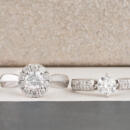
Anatomy of a Ring
Knowing the different parts of a ring can help you make a better decision when choosing a new ring and it can help you know when your ring may need … ring has a shank. This is the technical term for the band of metal that encircles the finger. There would be no ring without the shank. If the ring has a distinct design feature on the top part, the ring shank is generally said to start … point that the design stops. A jeweler will usually add or remove metal from the bottom of the shank when sizing a ring. This can sometimes be done so well that you would never know it was sized looking at the shank with your naked eye. …
-
Synthetic Gems: The Whole Story
Ruby, sapphire, emerald and alexandrite are very beautiful gems and very rare in their stunning beauty. These four gems have been coveted by… years. But, what if anyone could own them? At gem shows and museums, I have seen jaw dropping rubies, sapphires and emeralds. These gems in high quality have put ownership beyond most people to justify the price. Just a one carat gem could …synthetic. Both, I feel, are impossible to identify in a piece of jewelry. Synthetic ruby, sapphire, alexandrite and emerald are very complex because there are different ways to make them. The inexpensive way to make the synthetic gems cost …
-
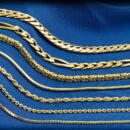
Types of Necklace Chains
… piece of jewelry. But, what kind of chain is best for you? In this article we’ll introduce you to the staggering variety of necklace (and bracelet) chains that are available right now in the jewelry world. Each one has its own unique … and don’t often snag the pendant bail. They are also relatively strong to support the weight of a pendant during daily wear and tear. Larger link cable chains make a good base for charm bracelets. PROS Wearability – The simple design of …
-
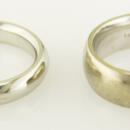
The Difference Between White Gold and Platinum
… its karat. The key to understanding gold karat is the karat value over 24. An example is a 14-karat gold wedding ring. It is 14/24, which equals 58.3% gold and 41.7% alloy. The white color is achieved by a careful choice of the alloying … because if you don’t like the light yellow look of a specific manufacture, then don’t buy it. New white gold rings are usually coated with a hard protective finish of rhodium, a silver-white metal like platinum. The rhodium plating is …
-
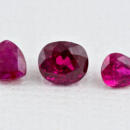
Gem in the Spotlight: Ruby
… believed to protect the wearer from injury and to keep them safe and healthy. Many cultures believed that wearing rubies in battle made warriors invincible and protected them from harm. Innumerable powers have been associated with the … is the most famous ruby, and was originally mined in Myanmar. The Sunrise Ruby was eventually set by Cartier into a ring along with two diamonds weighing a total of 5 carats. In 2015, Sotheby’s put the ring up for auction where it sold …
-
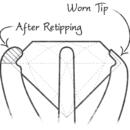
Jewelry Repair FAQ
… you have a question that you don’t see answered here, please contact us and let us know. A gemstone fell out of my ring. Will the new stone match the old one? We get this question all the time. People want their jewelry to look just the … have a yellow tint to them, so they require regular rhodium plating to keep looking white. How often should I bring my jewelry in for check-ups? A little preventative maintenance can go a long way towards keeping your diamonds from …
-
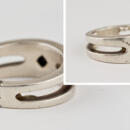
Jewelry Solder: What You Should Know
Solder is the unseen “glue” that holds most jewelry together. If you have ever had a ring sized, a chain repaired, or your wedding set joined together, you have very likely seen solder in action. But, what … will focus our discussion on gold jewelry, but the same concepts also apply to silver and platinum as well. If your ring is made out of 14 karat gold, you know that approximately 56% of it is gold with the rest being made up by a variety… solder? With solder a different set of alloy metals are used than with regular karat gold with the purpose of lowering the melting point of the finished metal. These metals–usually zinc, cadmium, tin or indium–all have low melting points…